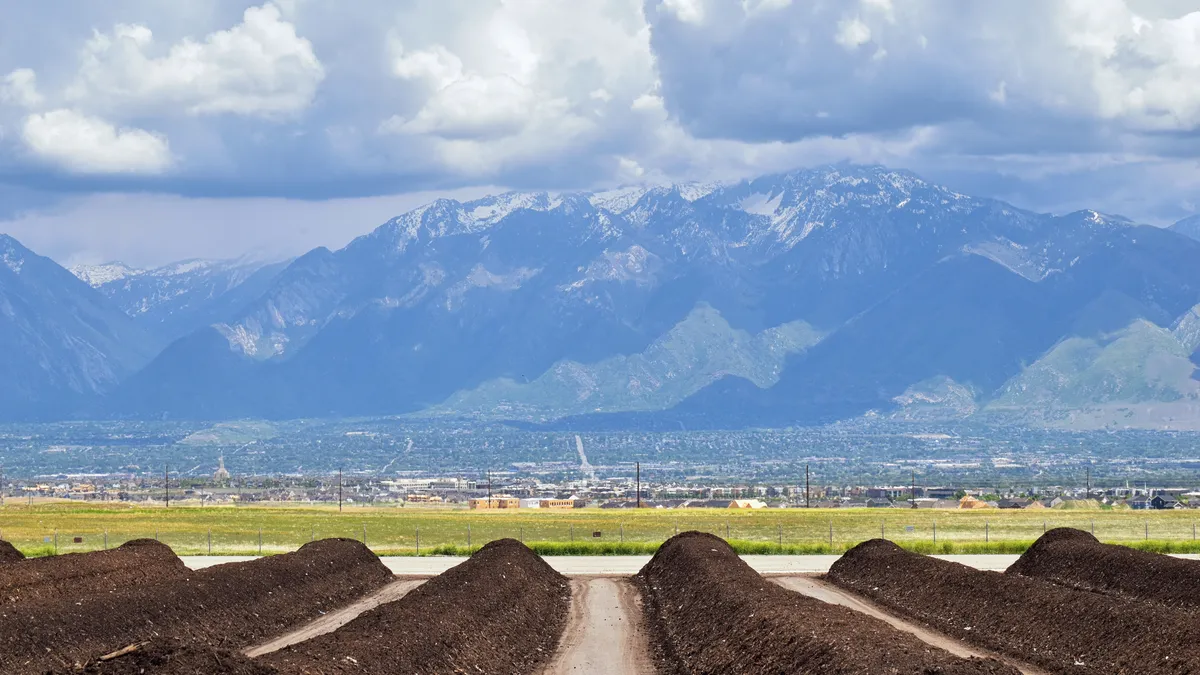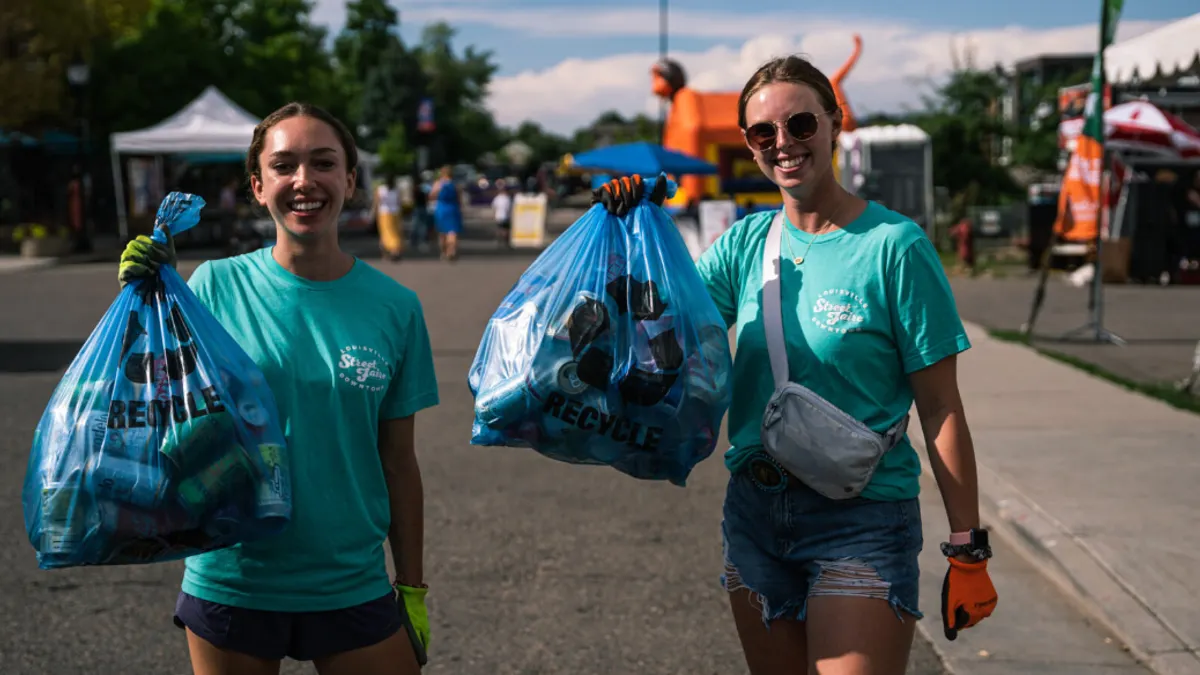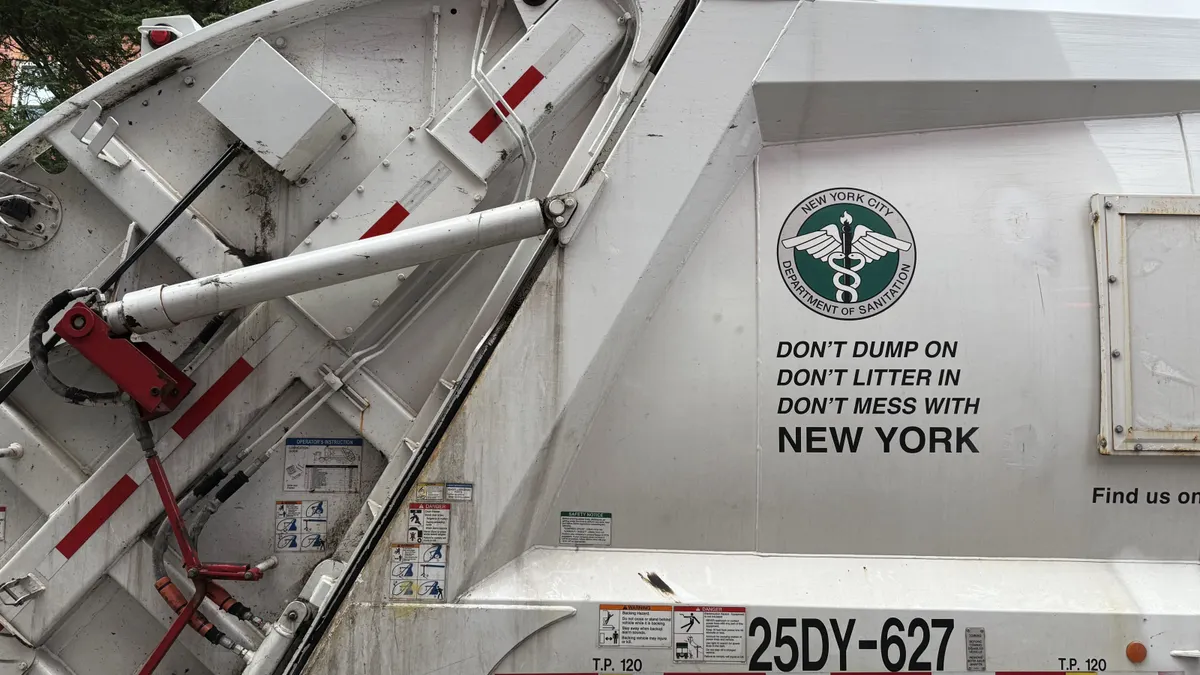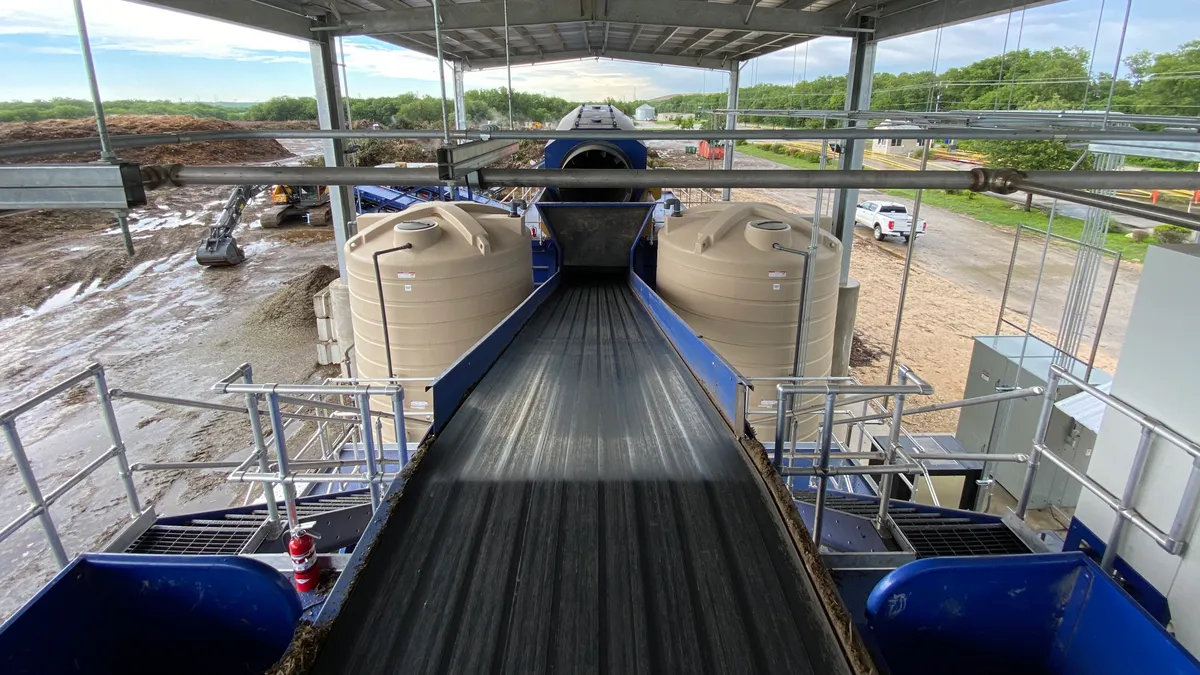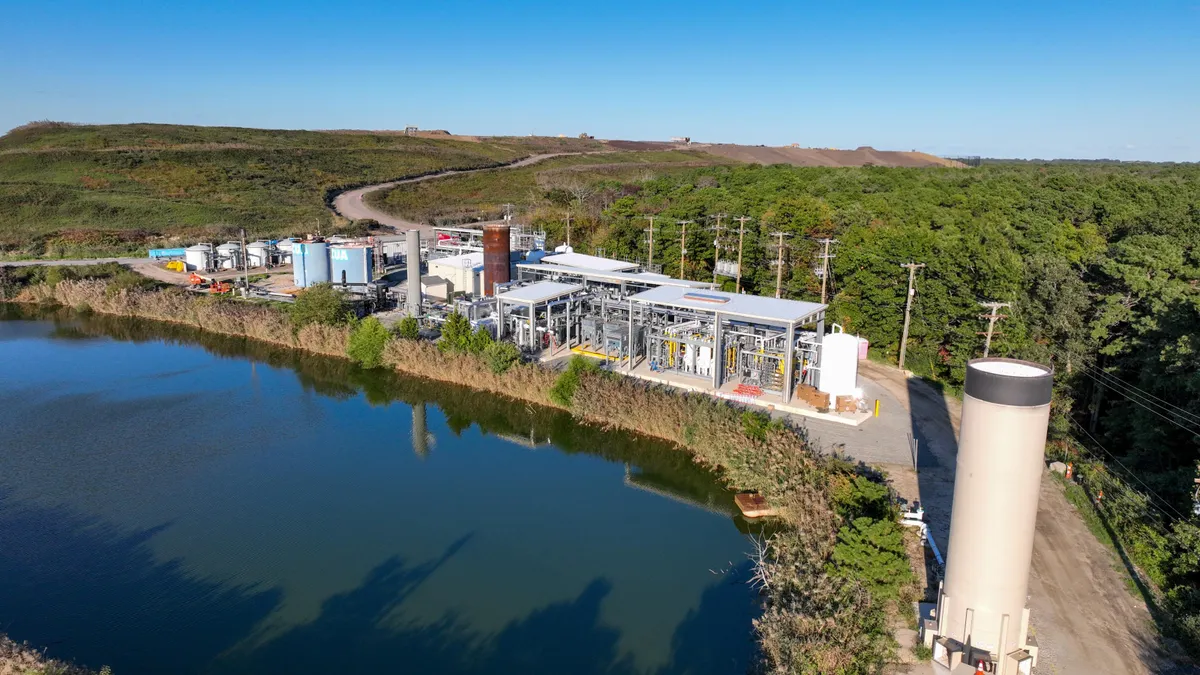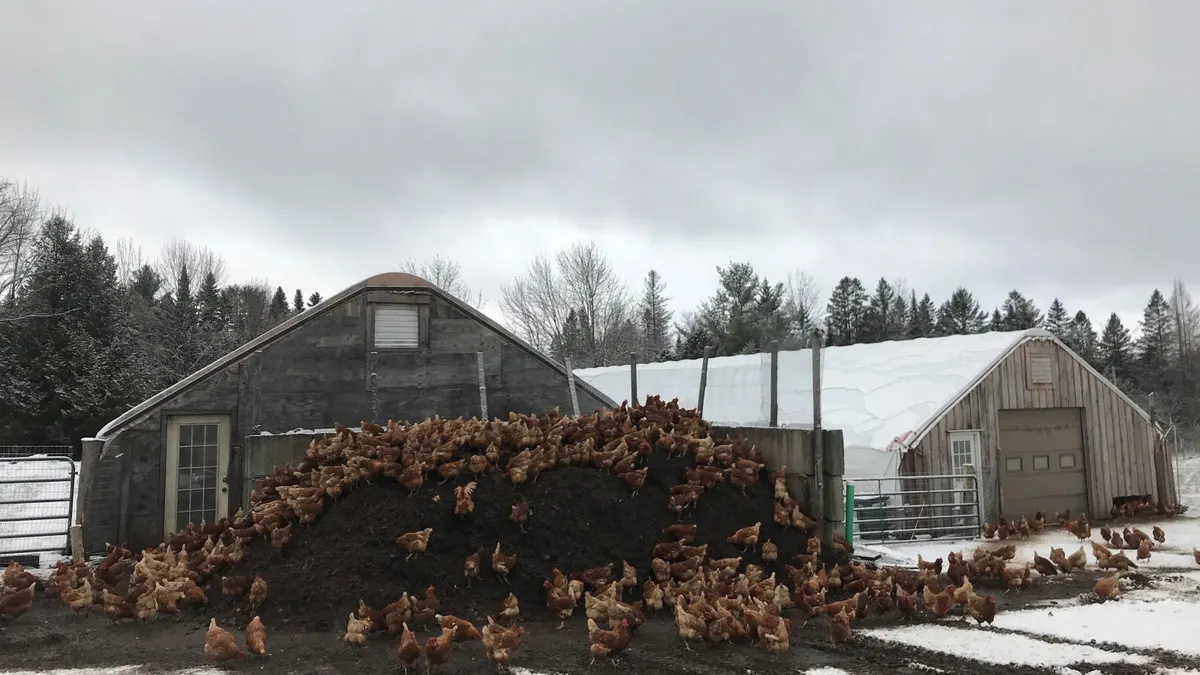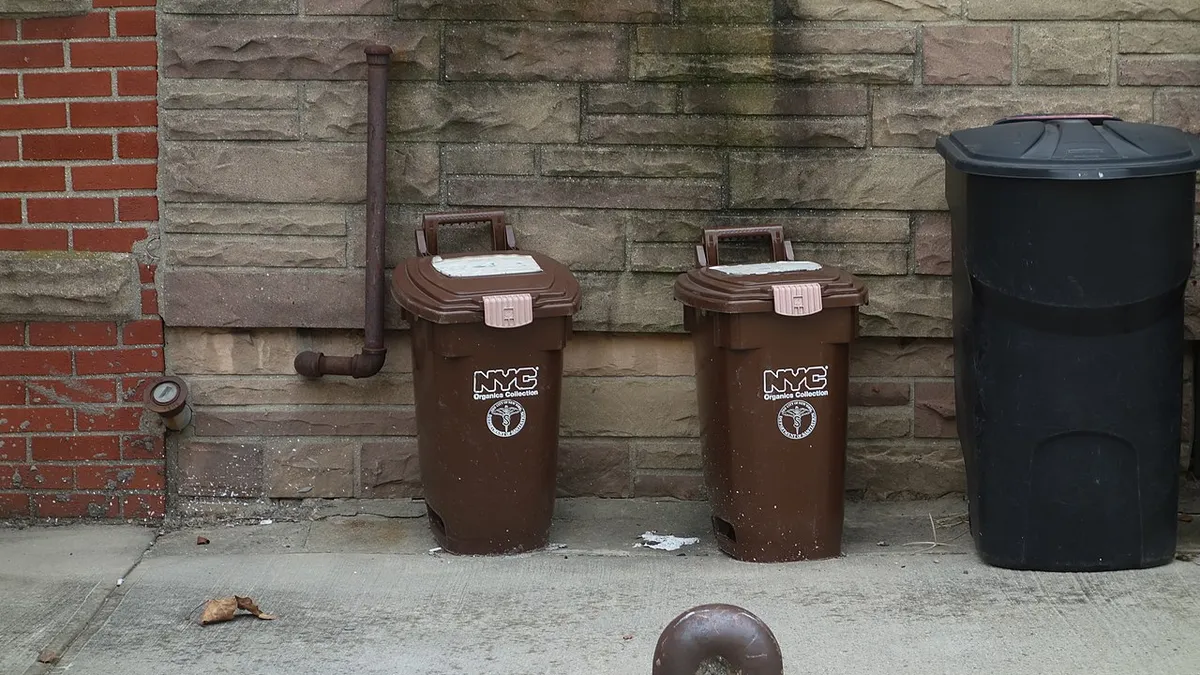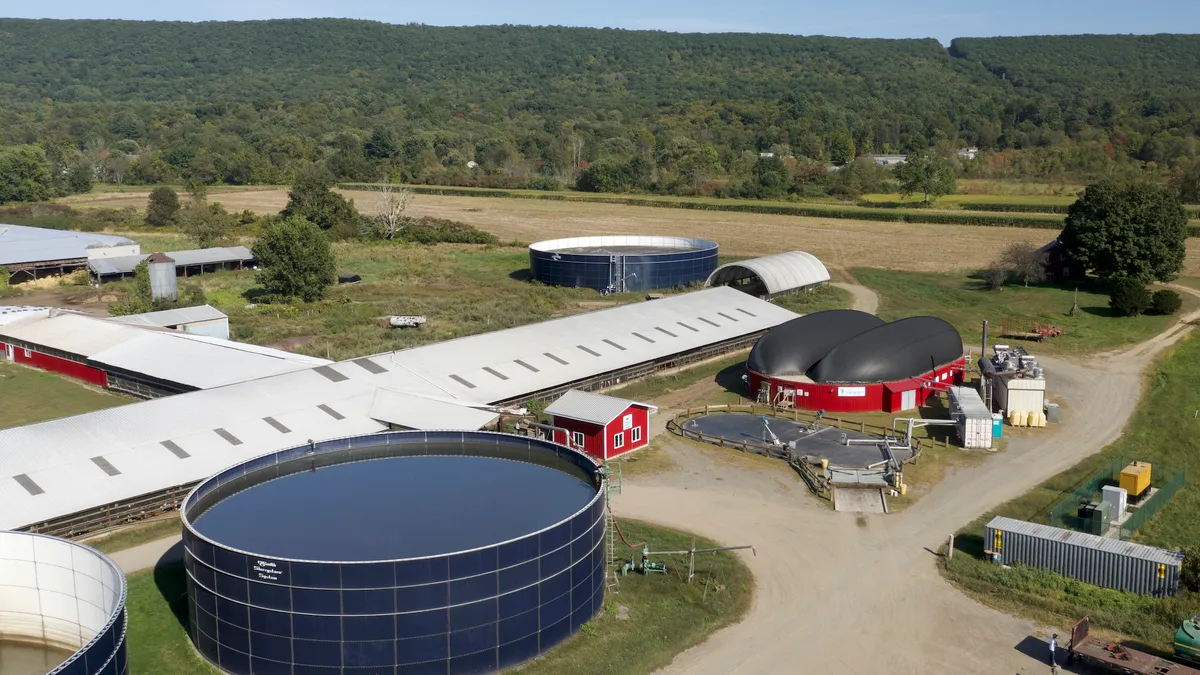California began 2022 with a radical shift in how it handles food waste, by requiring local jurisdictions to offer organic waste collection services. While that part of the law has gotten a lot of attention, another component focused on procurement speaks to a similarly urgent issue — what to do with the increasing volumes of compost.
Pressure to reduce the emissions associated with organic waste has compelled compost production around the U.S. Per a U.S. Composting Council survey (based on a 25% response rate) producers generated an estimated 5.1 million tons of compost in 2020. Those high volumes of the soil additive mean markets need to grow, too. While landscaping customers accounted for 40% of compost sold in 2020, according to the survey, agriculture used only 10% of the product, along with parks and roads projects. How to grow markets in a cost-effective way motivates ongoing surveys, reports, legislative discussions and sales meetings across the country.
Though government initiatives could increase demand, compost advocates hope that a variety of education tactics will also attract more farmers, ranchers and landscapers to the material. Simply finding new customers isn’t sufficient — buyers have to stick around and be persuaded that investing time and money into the additive is worth it. As a result, they need more nuanced information on how and when the product delivers, and how and when it doesn’t.
“We’re not pushing it for compost’s sake,” said Emily Coleman, the circular organics program manager for King County, Washington. “We’re focused on putting it in the right place and at the right application rate so folks want to continue to use it.”
Policy pushes
Policies similar to California’s have made headlines, too. Vermont has banned food waste from landfills, while states like New York and Connecticut are among the list of states require large waste generators to recover and recycle their organics.
In some cases, states complement these plans with legislation that aims to make public projects reliable customers. The new California law requires local jurisdictions to purchase certain amounts of products made from recycled organics, one of which can be compost. Since 2020, Washington has required government-funded projects to lay down compost when and where the material makes sense. The mandate, which covers transportation departments, natural resource divisions, parks management and more, could help the state reach it goal of cutting the volume of food waste generated in half by 2030.
Builders or landscape architects that win construction bids, particularly for projects involving soil amendments, are now more likely to see compost use in the resulting contracts. Few completed projects have been affected by the Washington law, however the number of proposals that would require compost in the technical specifications are piling up, King County's Coleman said.
The legislative tactic is one the Natural Resources Defense Council (NRDC) hopes municipalities around the U.S. can pull off as well. Last August, the organization debuted a downloadable, modifiable sample bill that requires publicly-funded infrastructure projects to consider or use compost. Ideally, communities can adapt the model bill to fit local specifications.
One portion of the sample bill notes that compost should be selected so long as it’s not cost-prohibitive, a definition the NRDC defined as 10% more costly than alternatives. The percentage is one local governments might modify, along with other details such as what compost volumes qualify as meeting application standards in different conditions.
Though the sample legislation deals with public compost purchasing and use, hopefully contractors build habits they take to private projects too, said Darby Hoover, a senior resource specialist at the NRDC who helped draft the sample bill.
“If a city agency is requiring use, possibly they're using a contractor that's going to be in use for other private projects, who may already have this protocol in place and offer it to a new customer, for example.”
Making the sale
If nonprofits like the NRDC hope that compost use by one customer eventually draws in other clients, then industry salespeople are the ones who make sure that happens.
Hauling and spreading the material is most lucrative in bulk, so companies look to maximize how much compost they truck to a site, said Charles D. Duprey, president and founder of Naturcycle, a consulting firm and compost sales company.
A compost delivery bound for, say, a park might have compost salespeople approaching nearby businesses or homes ahead of time to see if they can roll a spreading operation over property lines and into the next customer’s yard. The piggyback tactic can entice new buyers who otherwise need help integrating into the compost supply chain. New customers are less familiar with compost options, equipment and companies than they are with traditional fertilizer.
"Compared to a fertilizer I can buy, put in a bag and spread with a $50 spreader I buy at Home Depot, applying compost to [an] athletic field or something like that is a little more complicated," Duprey said.
Salespeople often show buyers how to access equipment or who to call for a spreading service. When a neighboring piece of land already has the logistics sorted out, new clients can avoid the same hassle.
If a potential compost customer is considering how to move the material around, they might have already cleared some other common educational hurdles. In assessments of compost market opportunities for Washington's King County and California's San Diego County, surveys of producers and potential customers found that people aren’t always sure what compost is, let alone why they should use it or how to incorporate it into their farming or landscaping.
Streamlining what could be long, educational pitches, Coleman said, often involves discussing the compost attributes that particular clients would be most interested in. In her experience, a transportation department constructing or maintaining roadside slopes is most interested in how compost can slow soil degradation. For the King County Water and Land Resources Division, the additive would matter most when it comes to maintaining or boosting soil health.
Convincing people to give compost a try inevitably includes a conversation about cost. Pound for pound shelf price comparisons often show traditional fertilizer to be more expensive than compost. But the volume of compost a property might need and the cost of transporting and spreading the heavy material makes the operation more expensive than a comparable fertilizer scatter, said Ryan Cerrato, vice president of product marketing at composter WeCare Denali.
The company often serves customers who can buy high volumes at once, like contractors or excavators working on top soil for large facilities, but the deliveries should stay close to where the compost is made — ideally within 50 miles of one another.
“You can become priced out of a lot of projects if you get too far,” said Cerrato.
In Washington, the financial hurdles are mountain-high: The Cascades mountain range separates more populated, food scrap-producing regions from farmland that could apply higher volumes of compost. Crossing the distance is too expensive and requires fuel volumes that could diminish the environmental benefits compost delivers, Coleman said.
Government funding programs could defray some of the costs. Federal agencies like the U.S. Fish and Wildlife Service and even the Federal Emergency Management Agency back grant programs where potential recipients might install rain gardens or other features that absorb stormwater, rather than funnel it elsewhere. These projects often rely on compost during construction or maintenance, Duprey said. The industry-supported COMPOST Act currently pending in Congress would, if enacted, set aside $200 million a year through 2031 for compost infrastructure grants that could go to market development work, among other things.
Experts also point out that broader cost-benefit analyses can make a compost price tag seem more reasonable. Unlike fertilizer, compost stabilizes soil and reduces irrigation needs. This investment could cut spending on other property management protocols. Some states also require people who spread fertilizer to earn a license, which is money and time that doesn’t have to be spent in order to lay down compost, Cerrato pointed out.
Day-to-day value comparisons also rarely include the extractive harm of typical fertilizer in the equations, Coleman said. Natural gas serves as a feedstock in synthetic fertilizer production plants, for example. For an individual buyer or community concerned about the costs of climate change, an additive that repurposes material that might have otherwise contributed to landfill emissions could be worth the upfront price.
"There’s cost and there’s value, and that’s what we’re selling — we’re selling the value," Cerrato said. “The environmental impact, the perception of your institution, and the long-term benefits of your compost."
Market boundaries and horizons
When the questions potential buyers have about compost lack good answers, researchers get to work.
From a commercial perspective, this might mean designing added-value products or mixes targeted for intended application settings.
WeCare Denali offers several of these — one being a blend specifically for engineered green roofs, a market the company is hoping to make more progress in. The company's research team is also investigating what a cannabis farm composite might include. Indoor or outdoor facilities might benefit from different compost types, said Cerrato.
State transportation departments also want to do their own investigating. State agencies such as the Iowa Department of Transportation, Minnesota Department of Transportation and Maryland State Highway Administration have brought on Allen P. Davis and Ahmet Aydilek, two civil and environmental engineering professors at the University of Maryland, as consultants to investigate how different soil preservation materials might perform at the local level.
Transit agencies responsible for keeping hundreds of miles of roadside embankments from crumbling away could be large compost customers — the Washington agency buys some compost, said Coleman. However, humidity, rainfall levels, severe storm types and other stresses that roadsides are exposed to determine the costs and benefits of compost, Aydilek said.
In their roadside care reports, Davis and Aydilek have never recommended an agency avoid compost (though Davis has suggested avoiding the material in other stormwater control scenarios). Instead, they might have different ideas as to how it could fit into maintenance depending on department priorities. One department might want to pivot from blankets of the additive on top of slopes to applications that are pushed farther under the surface of the soil, Aydilek said.
Other research could answer more fundamental questions about compost claims. A particularly trendy area of investigation is carbon farming — the idea that compost on agriculture fields or rangelands could help bring carbon out of the atmosphere and into the soil.
States and the U.S. Department of Agrilculture have, or are investigating, funding programs to encourage this potential carbon removal effort. The California Healthy Soils program helps farmers and ranchers fund, among other things, carbon sequestration on their land and is a partnership waste and recycling entities have tapped into. Recology, for example, has partnered with at least 10 farms on projects to supply the necessary compost. Washington state researchers are examining what a similar initiative would look like in their area.
As the programs grow, so does the need to better understand what tactics make the desired climate benefits a reality. The science of how compost draws carbon into soils is complex, said Jeff Creque, co-founder of the Marin Carbon Project and a director of the Carbon Cycle Institute.
The "storage" also lacks the permanence that people might typically envision for carbon sequestration projects. Agriculture and rangeland programs will always lose some carbon to the atmosphere, Creque said. Though depending on how land is managed, the cyclical movement of carbon from the environment can bring more carbon into the land than is let out and lead to a net storage effect.
The success of any soil carbon storage tactics depends on everything from how farmers churn their fields or what they do or don’t plant after their main crop has been harvested.
“Carbon sequestration is so variable when it comes to compost use [in soils],” he said. “You can always use more research into that question.”
For the time being, Creque suspects that advice on how to make compost applications cost-effective are a more pressing concern for farmers. Increasing plant productivity or reducing the amount of irrigation still hold plenty of appeal. Reaping those benefits might require different application tactics depending on what someone farms, Creque said.
New techniques to work compost into a wider range of settings have helped boost markets for the product, but advocates, retailers and researchers still see endless expanses of land that could make use of so much compost.
The benefits to creating and using compost — particularly the avoided greenhouse emissions — mean that stagnant markets aren’t a problem to worry over, NRDC's Hoover said. The bigger concern is letting landfill-associated emissions rise by not extracting valuable organic waste.
“We’re already doing something that is not working, so let's move more resources towards what does work," said Hoover.
Looking ahead, what to do with that black gold diverted from the trash is a question that could be answered with an ever-expanding list of options.
“Compost can be used in an infinite variety of ways,” Creque said. “How do you do research on an infinite set of possibilities?”


